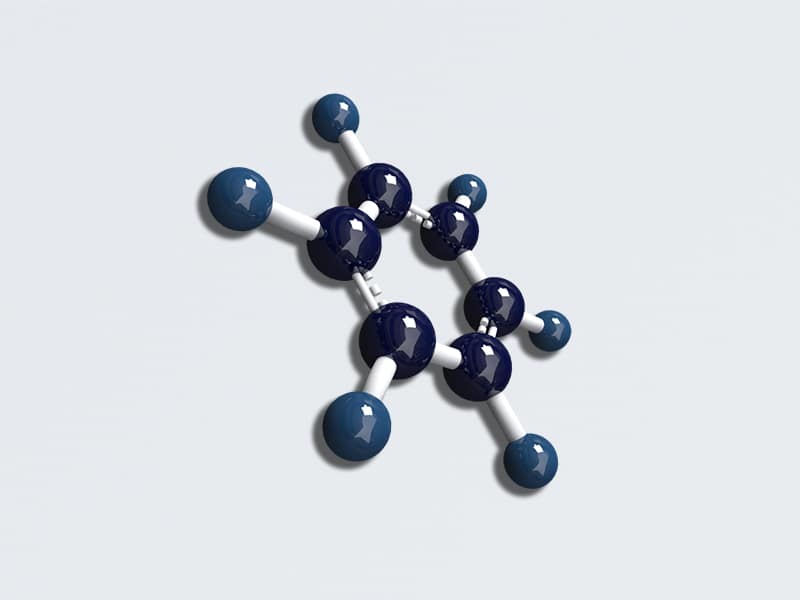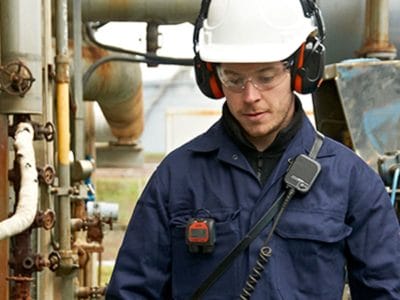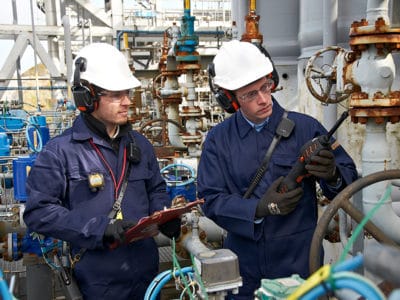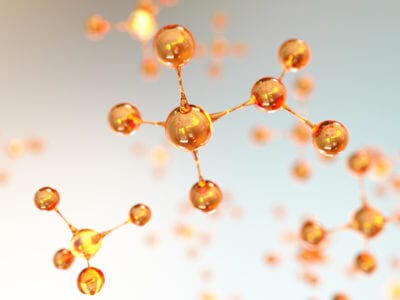
Benzene
Formula: C6H6 | CAS: 71-43-2
Detecting benzene: Long-term exposure to benzene mainly harms the bone marrow, the soft, inner parts of bones where new blood cells are made.
Detecting benzene within its primary produced applications
You might encounter benzene exposure at work during certain jobs in:
- Oil refineries
- Chemical and petrochemical plants, including some offshore installations
- Coke works
- Foundries, during casting (where benzene sulphonic catalysts are used)
- The storage, distribution and use of petrol or benzene itself
Human exposure to benzene has been associated with a range of acute and long-term adverse health effects and diseases, including cancer and aplastic anaemia. Public health actions are needed to reduce the exposure of both workers and the general population to benzene.
– The World Health Organisation (WHO)
Detecting benzene to ensure safe workplace exposure limits.
Protecting both people and the environment whilst meeting the operational needs of your business is a very important role and, if you have operations in the UK you will be well aware of the requirements of the Control of Substances Hazardous to Health (CoSHH) Regulations and likewise the Code of Federal Regulations (CFR) in the US.
Similar legislation exists worldwide, the common theme being an onus on hazard identification, risk assessment and the provision of appropriate control measures (bearing in mind the hierarchy of controls) as well as health surveillance in some cases.
Unlike other health and safety issues that are managed by risk assessment, this can only be determined by monitoring.
There are several monitoring solutions on the market but photoionisation detection (PID) has proven to be the ideal tool. PID solutions available are as follows:-
- Personal monitoring for benzene detection
- Fixed monitoring for benzene detection
- Portable monitoring for benzene detection
Gas Factsheet
Everything you need to know about detecting benzene
Our Gas Factsheets which is available to download below provides you with key information on the exposure limits and the locations of where potentially harmful gases can occur. We also share information on gas detection monitoring techniques and equipment that can help you manage gas detection in the workplace, for worker and site safety.

Detecting Benzene
Formula: C6H6 | CAS: 71-43-2
Synonyms: benzene, benzolene, carbon oil, coal naptha, cyclohexatriene, phenyl hydride, pyrobenzol, benzol, benzole, cyclohexatriene, pyrobenzole, benzine, pyrobenzol, benzolene, [6]annulene, carbon oil, rcra waste number u019, 2,5-cyclohexadien-1,4-ylene, benzinum, benzolum, aromatic alkane
Benzene is a major constituent of crude oil, an excellent fuel and solvent and a precursor used in the manufacture of many chemicals, particularly upon reaction to form cyclohexane, ethyl benzene and cumene.

What our customers say
See what our customers have to say about our products first hand, and how they are successfully monitoring benzene out in the field.
View All Testimonials”We needed an instrument to detect the levels of VOC and benzene when we open our piping system. Our central region in Canada has been using the product for a year or so now so we were confident that the instrument was right for us compared to the Draeger CMS chip detectors which we had used in the past. The instrument was purchased through Levitt Safety Ltd.
Bruce SangsterEnbridge Pipelines

















